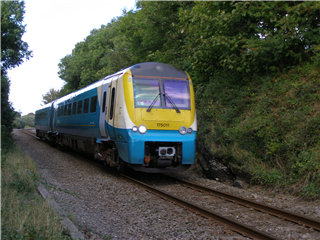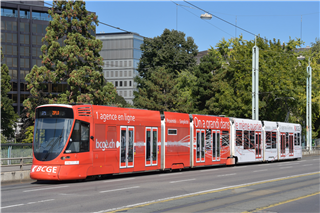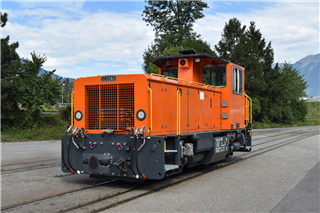Set: Test
- All Fields
- 148
- 628 300
- 03
- 08
- 21
- 13
- VL10 (ВЛ10)
- ВЛ10
- 215
- Tr 1500
- 628
- 628 100
- 661
- BB 661
- 321
- 101
- BB 503
- 117
- 39-70 - ABl
- 148.5
- 117.1
- 14
- 117 200
- E94
- 39-70 - ABeelm
- 39-70 - ABlv
- 195
- 82 79 6994
- 813
- E244
- 99 81 9214
- 629
- AC44
- Istanbul M6
- M4
- 99
- 95
- 153
- 63
- 5MT (Black Five)
- 1216

|

|

|

|

|
British Railways (BR), which from 1965 traded as British Rail, was a state-owned company that operated most rail transport in Great Britain from 1948 to 1997. Originally a trading brand of the Railway Executive of the British Transport Commission, it became an independent statutory corporation in January 1963, when it was formally renamed the British Railways Board.[1]
British Railways was formed on 1 January 1948 as a result of the Transport Act 1947, which nationalised the Big Four British railway companies along with some other (but not all) smaller railways. Profitability of the railways became a pressing concern during the 1950s, leading to multiple efforts to bolster performance, including some line closures. The 1955 Modernisation Plan formally directed a process of dieselisation and electrification to take place; accordingly, steam locomotives had been entirely replaced by diesel and electric traction (except for the narrow-gauge Vale of Rheidol Railway tourist line) by 1968. On 1 January 1963, the British Railways Board was created to manage the railways as a successor to the British Transport Commission.
It was during the 1960s that perhaps the most substantial changes were made. Seeking to reduce rail subsidies, one-third of the network and over half of all stations were permanently closed under the Beeching cuts. Trunk routes were considered to be the most important, and so electrification of the Great Eastern Main Line from London to Norwich was completed between 1976 and 1986 and on the East Coast Main Line from London to Edinburgh between 1985 and 1990. Train manufacturer British Rail Engineering Limited (BREL) produced the capable InterCity 125 and Sprinter sets, the introduction of which improved intercity and regional railways, respectively, as well as the unsuccessful Advanced Passenger Train (APT). Gradually, passengers replaced freight as the main source of business. From 1982, under sectorisation, the regions were gradually replaced by "business sectors", which were originally responsible for marketing and other commercial matters when they were first created but had taken over entirely by 1990.
- All Fields
- 148
- 628 300
- 03
- 08
- 21
- 13
- VL10 (ВЛ10)
- ВЛ10
- 215
- Tr 1500
- 628
- 628 100
- 661
- BB 661
- 321
- 101
- BB 503
- 117
- 39-70 - ABl
- 148.5
- 117.1
- 14
- 117 200
- E94
- 39-70 - ABeelm
- 39-70 - ABlv
- 195
- 82 79 6994
- 813
- E244
- 99 81 9214
- 629
- AC44
- Istanbul M6
- M4
- 99
- 95
- 153
- 63
- 5MT (Black Five)
- 1216
This dataset is regularly updated by users from various internet sources.
If you have updates or corrections to contribute, please get in touch via the forum.
All information is unofficial.